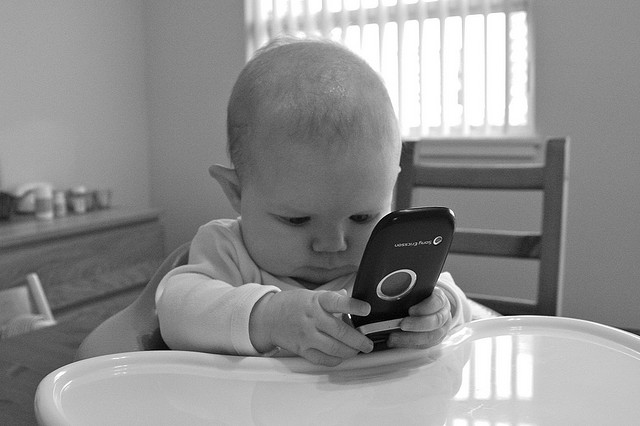Then the person on the other end of the call must have launched into a seriously juicy tale, because the woman replied, “No!”
Long silence.
“I can’t believe he did that! Can you imagine?”
No, I can’t imagine. As I tried to contain my building frustration, after rereading a sentence five times with no hope of comprehension, I resolved to scan the scientific literature to find out why hearing someone talk on their cell phone is so maddening. But then more pressing matters got in the way and I forgot about it.
So I was interested when I heard about a new study published in PLOS ONE last week in which psychologists from the University of California, San Diego investigated this very question. Well, nearly so. Being cognitive neuroscientists, they weren’t measuring something as subjective as annoyance per se but more tractable scientific questions like memory and attention. And, yes, they found that hearing a one-sided conversation is extremely annoying and distracting—far more so than hearing both sides of a conversation.
Why study what’s become one of the most common examples of thoughtless behavior? Americans spent something like 2.3 trillion minutes on wireless devices last year, the researchers note in the paper, with some people confessing a “personal connection” with their cell. The sheer ubiquity of these insidious little devices means they will affect pretty much everyone at some point in some way.
Several studies show that chatting on cell phones while doing something else, like driving, interferes with your ability to perform that task—and you don’t improve with practice. The studies suggest that the effects aren’t related to motor skills, like dialing while steering, but to an inability to pay attention to what’s going on around you.
Walking while chatting isn’t much better. Like the famous gorilla-basketball study—where participants who watched teams pass a basketball back and forth failed to notice a person in a gorilla suit amble through—a 2010 study found that most pedestrians talking on cell phones failed to notice a clown ride past them on a unicycle. Cognitive neuroscientists call this phenomenon “inattentional blindness.”
If cell phones can compromise your ability to perform a task as ingrained as walking, it’s surprising that only 10 states prohibit drivers from talking on a handheld device.
It’s no secret that most people hate listening to others talking on their cell phone. Surveys support what we all assume, with more than 80% of respondents attesting to the irritation factor. But few investigators have devised experiments to understand the cognitive effects of listening to a one-sided conservation. So Victoria Galván, an associate professor of psychology at UC San Diego, set out to do just that.
To simulate what happens when we find ourselves hostage to someone jabbering on their phone on a bus or in a restaurant, Galván combined a well-controlled attention task experiment with a bit of deception. The study participants, 164 undergrads taking an Intro Psych class at the university, thought the study was about a link between anagrams and reading comprehension. (Fifteen of the students must have read the literature because they guessed the study’s aims, forcing the researchers to exclude their results.)
While the students worked on unscrambling anagrams, a researcher left the room. Then the conversations began: "confederates" sitting near the students started either one-sided or two-sided 7-minute conversations that covered details about a birthday party, shopping and a date. When the researcher returned, she said her team wanted to understand “how a conversation affected a person” and gave the students a test to measure their memory of the conversation and a questionnaire to assess how distracting it was.
As predicted, the students who heard the one-sided conversation were more distracted and had more trouble with their anagrams. They also found the volume and content of the conversation more annoying. Sound familiar?
The researchers attribute our annoyance in part to a lack of control, which other studies show can lead to heightened stress responses such as headaches and anxiety.
Interestingly, the students who heard the one-sided conversations performed better on the memory task, a result that may relate to the “unique, intrusive, ‘attention-grabbing’ aspects of a one-sided cell phone conversation," the researchers explain, since the students weren’t instructed to pay attention to the conversation. Or maybe they remembered more because they had half the information to absorb.
I’m betting on the unique, intrusive, attention-grabbing hypothesis. A previous study in a lab setting by a different research team suggested it’s the unpredictability of one-sided conversations that gets under your skin. When you hear two people talking, you don’t waste cognitive resources trying to guess what the other person is saying and it’s easier to block them out. (And I might have learned what that no-good guy did.)
But when you can hear just one side, you’re left waiting for the next snippet, imagining what comes next. I certainly had to use a lot of brain power to stay focused on that journal article, which I could finally read in earnest only after my fellow passenger ended her call after 15 very long minutes. Luckily, she did it before I gave her something else to talk about.
